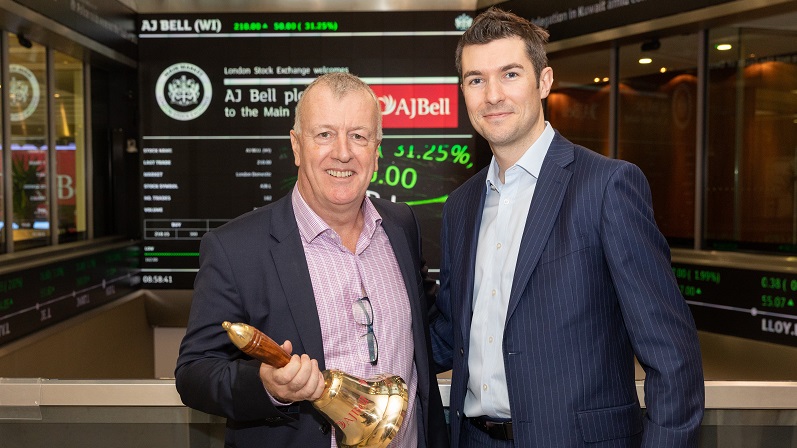Monday 23 May
- -First quarter trading update from Kingfisher and Pershing Square
For B&Q owner Kingfisher, Hargreaves Lansdown senior investment and market analyst Susannah Streeter said investors will be looking to see if it has managed to hang onto the higher market share acquired during the pandemic.
“Although some fresh DIY converts may put down their paintbrushes forever, it’s likely that a sizeable chunk that picked up a hammer for the first time will keep coming back, thanks to their new skills and a shortage of labour in the building trade,” she said.
“Investors will be watching out for signs that the ongoing supply chain issues could still be a lingering headache for the company, particularly with the price of raw materials staying volatile. There’s also speculation that further dividends could be on the cards, reflecting Kingfisher’s strong balance sheet.”
- -Full year results from Big Yellow Group
- -Rightmove UK house price index
- -Germany Ifo Business Climate index
- -Belgium Courbe Synthetique
The Ifo Business Climate index and Courbe Synthetique recorded minor positive gains last month, with the former inching one-point higher to 98.1 and the latter jumping from 0.4 to 2.4.
The upcoming readouts will give economists and central bankers a steer on whether the bloc is seeing inflation, deflation or stagflation and an upturn or a slowdown, said AJ Bell investment director Russ Mould and financial analyst Danni Hewson.
“Germany’s Bundesbank is just one institution to offer a warning that high energy prices could tip the country – and potentially the European Union – into recession. Meanwhile, the European Central Bank president seems more frightened about the risk of a downturn than she does inflation, judging by how slow the monetary authority is moving – 121 global interest rate rises so far in 2022 and not one from the ECB, although Lagarde now seems to be steering markets towards a first hike in July.”
- -In the US, quarterly results from Zoom Video Conferencing
Tuesday 24 May
- -Full-year results from Bytes Technology, JD Sports, Cranswick, RS Group (formerly Electrocomponents) and Homeserve
- -First-half results from SSP, Greencore, Shaftesbury, Topps Tiles and Avon Protection
- -Trading statement from Hill & Smith
- -Flash manufacturing purchasing managers’ indices (PMIs) in Asia, Europe and UK
- -US new homes sales
- -In the US, quarterly results from AutoZone, HPE, BestBuy and Ralph Lauren
Wednesday 25 May
- -Trading statement from Intertek
- -Full-year results from Marks & Spencer, Mediclinic, Pets at Home, Severn Trent, SSE
- -First-half results from Hollywood Bowl
- -Interest rate decision from the Reserve Bank of New Zealand
- -Core inflation figures in Japan
- -US durable goods orders
- -US oil inventories
- -In the US, quarterly results from Nvidia, Pinduoduo, Snowflake, Splunk and HP
Nvidia has been badly bruised in the tech sell-off, with shares down over 43% year-to-date. For its upcoming quarter it expects revenue to be around $8.1bn.
“There is reason to think the group will come good on this target, although of course there are no guarantees,” said Hargreaves Lansdown equity analyst Sophie Lund-Yates. “The specialised chip-maker is being buoyed by a huge boost in gaming. Its RTX 30 series has been described as ‘the most revolutionary graphics card in years’. But there’ll be a particular eye on the Data Centres business.
“Nvidia produces cutting edge hardware for training artificial intelligence (AI) software, and at $3.3bn the division holds almost as much weight as the core gaming business. There may also be commentary around the recent weakness in crypto currency, and what this could mean for Nvidia’s bitcoin products.”
Thursday 26 May
- -Half-year results from AJ Bell and Integrafin
Platforms have been struggling to match their explosive growth during the pandemic, with Hargreaves Lansdown the latest to reveal a dip in new business and clients.
AJ Bell’s net inflows were flat at £1.5bn at the end of its second quarter in March compared to a year ago but customer numbers were up 5% on Q1.
Integrafin reported £1.4bn of net inflows for its platform Transact over Q2, a 4% drop on a year ago.
Both took a hit to their assets under management thanks to Russia’s invasion of Ukraine unsettling markets.
- -Full-year results from Auto Trader, Caledonia Investments, Edinburgh Investment Trust, Intermediate Capital, Johnson Matthey, LondonMetric Property, Ted Baker and United Utilities
- -Trading statements from Wickes and S&U
- -US Q1 GDP figures (second estimate)
- -US initial jobless claims
- -US pending home sales
- -In Asia, quarterly results from Lenovo
- -In the US, quarterly results from Costco, Medtronic, Marvell, Dollar General, VMWare and Hormel
Friday 27 May
- -Full-year results from Renewi
- -UK Nationwide house price survey
- -In Asia, quarterly results from Meituan
- -US Personal Consumption Expenditures Index
The Federal Reserve’s preferred inflation indicator, which is based on a basket of goods that businesses are selling, rose 6.6% year-on-year in March. The uncomfortable increase, the steepest since January 1982, was driven by a 33.9% surge in energy prices and a 9.2% jump in food prices.
Along with the latest Beige Book (1 June) and the non farm payrolls and wage growth data (3 June), it will be one of the final pieces of information the Fed will receive before the next Federal Open Markets Committee meeting on 14-15 June, Mould and Hewson note.
Markets are currently pricing in a 93% chance of a 50bps rate hike to 1.5% and a 7% chance of a 75bps rise. There is a two thirds chance the Fed funds rate will be at least 3% by Christmas.
“The question then is how far the Fed can go, given that US rate hike cycles usually continue until something breaks – either the economy, the stock market or both,” said Mould and Hewson.
“A bogged-down Biden administration that is facing mid-term elections in November is hardly likely to welcome either development and it is possible that Congress will start to lean on the Fed to back off. But the central bank faces a difficult choice between raising rates to cool inflation but slowing down demand and the economy, or doing nothing and letting inflation erode consumer and corporate purchasing power, to the detriment of the economy.
“Nor is the US central bank showing any inclination to bail-out the wobbling financial markets, as it did during the 1997, 2000-2002, 2007-09, 2011 and 2020 stumbles, as it presses ahead with quantitative tightening (albeit gently). That may be the biggest surprise of all but tamping down on what had become frothy and bubbly asset prices could in itself be a policy tool, given how the combination of soaring stock, housing, crypto and other prices had boosted US household wealth to record highs and record multiples of US GDP.”










